When someone visits your site, you want to connect with them and convert them. At least, that’s what would happen in your perfect marketing world. But, without their email address and other data, it can be hard to make that connection, especially if they don’t take some sort of action on your site.
That is, unless you use email retargeting. You can use this practice to engage with a variety of people:
- Customers due for a renewal or replenishment
- Inactive customers
- People who abandon a cart before purchasing
- Visitors who spent a long time on a product page (or multiple pages) and left
- Subscribers who have never purchased
- Anonymous web traffic that visited your site
Whether you’ve never heard of this marketing term before or are just starting to implement it into your strategy, you’ll find what you need to know for every step of the email retargeting process.
Here’s what we will cover in this email retargeting guide:
- What is email retargeting?
- Benefits of using email retargeting
- When and how to use an email retargeting strategy
- Mistakes to avoid
- Email retargeting best practices
- Examples of email retargeting
- Frequently asked questions
Without further adieu, let’s jump into what email retargeting is, why you should consider using it, and how you can start enjoying the benefits it offers for your business.
What is email retargeting?
https://www.youtube.com/watch?v=TrwXkq_pVao
Email retargeting — or email-based retargeting (EBR) — is the practice of sending emails to people based on information about their behavior and interests. With retargeting, you can:
- Target people whose email address you already have with better-segmented emails
- Go after website visitors with specific emails based on information the browser’s cookies pick up
Retargeting uses technology (like cookies or cross-device ID) to identify website visitors. A browser cookie places a small file into their browser when they visit a site in the same way Amazon does to keep items in a user’s shopping cart.
Once they are identified, those visitors are matched to a partner network database of contact records (with opt-ins), and the end-user is sent email addresses of people. This is the type of information you can see once you have their email address:
- Frequency and number of past purchases
- Total amount spent
- Types of emails they’ve previously opened
- How recently they interacted with your emails
- Referrer
- Location
- Collection date
- Landing page URL
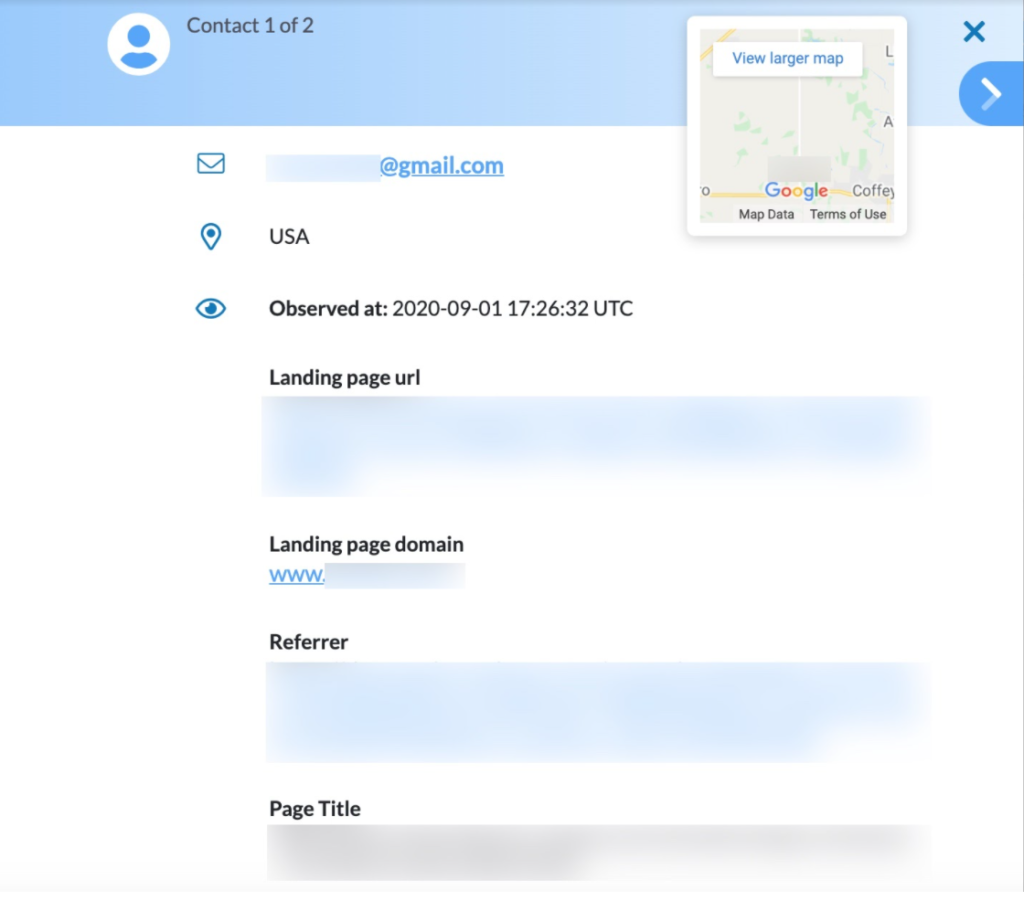
With email retargeting, unlike with display retargeting, the end-user pays once and owns the contact record forever. And as long as there’s an opt-out link in the email sent to these contacts, the end-user can email that contact record for as long as they want to.
Here’s an example of what email retargeting looks like:
- A web user visits your website, and their data is identified using cookies.
- The information is matched to a partner database that contains records of users with opt-ins.
- That data is sent to you (the end-user).
- You can then email the new user (even if they are an anonymous visitor) with the goal of eventually converting them.
After a browser cookie records their website activity or they spend a certain amount of time on a page, you can use their collected email address to contact them. Email retargeting works behind the scenes and is a practice most businesses can easily add to their email and direct mail marketing strategies to grow customer acquisition.
That’s the basic concept for how email retargeting works, so let’s dive into why you should consider adding this tool to your marketing strategy.
Why should you use email retargeting?
Whether you run a business, head up marketing, or are a blogger looking to grow your subscriber list, there are ways email retargeting can benefit your efforts. Here are just 10 of them:
- Grows email list. You’re not only adding subscribers with this method, but you already know they are interested in your products or services because they are visiting your site.
- Allows you to charge more for direct email newsletter advertisements. There’s not much advertisers like more than seeing a healthy, growing email list. Besides getting more from current advertisers, you can also use this selling point to attract partners with bigger budgets.
- Creates opportunity to upsell visitors. When they visit a certain page or product, you know they are already interested in that. And if they have already made a purchase, you can reach out to them with add-ons or higher-priced options.
- Increases overall traffic and social media shares. The larger your email audience, the larger possible audience you have for social media, as well. Whether they share some of your content on social media or just follow the social icons and connect with your page, you’re building valuable engagement.

- Gets products off of the ground quicker. Think about it: The larger your audience is, the easier it is to get products off of the ground because within that audience, there’s a percentage of people who will love and buy those products: 10 percent of a 10,000-subscriber audience liking your product is better than 10 percent of a 1,000-member list.
- Provides you with the ability to run viral contests and giveaways. People love free things, so contests and giveaways are always popular. The more people you can tell about those events, the better the chance is that they will go viral. And we don’t think we need to explain how valuable going viral can be.
- Segments visitors based off of their actions or visits. If someone makes it to your Cart page, you know they are a quality contact and can reach out to them with a targeted message.
- Reaches new people. Instead of losing site visitors who don’t sign up for your newsletter or don’t make a purchase, you can target them with other content or ads. Gone are the days of losing those visitors.
- Engage past customers. You can remind old customers who have fallen out of the sales funnel that you are still offering them something of value.
- Improve organic search rankings. Use it to drive traffic to a particular page.
The more comfortable you get with using email retargeting, the more benefits you can start enjoying from it. But don’t just take our word for it. Moz says that compared with a normal ecommerce conversion rate of between 2 percent and 4 percent, the rate for email retargeting conversions can be as high as 41 percent. Let that sink in for a minute.
When and how to use email retargeting
Ready to start enjoying those benefits with your marketing efforts? Then it’s time to add email retargeting to your website.
The exact steps to add email retargeting to your site will depend on which platform (like Retention.com) you use. However, the general setup process includes:
- Using a snippet script provided by the platform and pasting that script onto your website
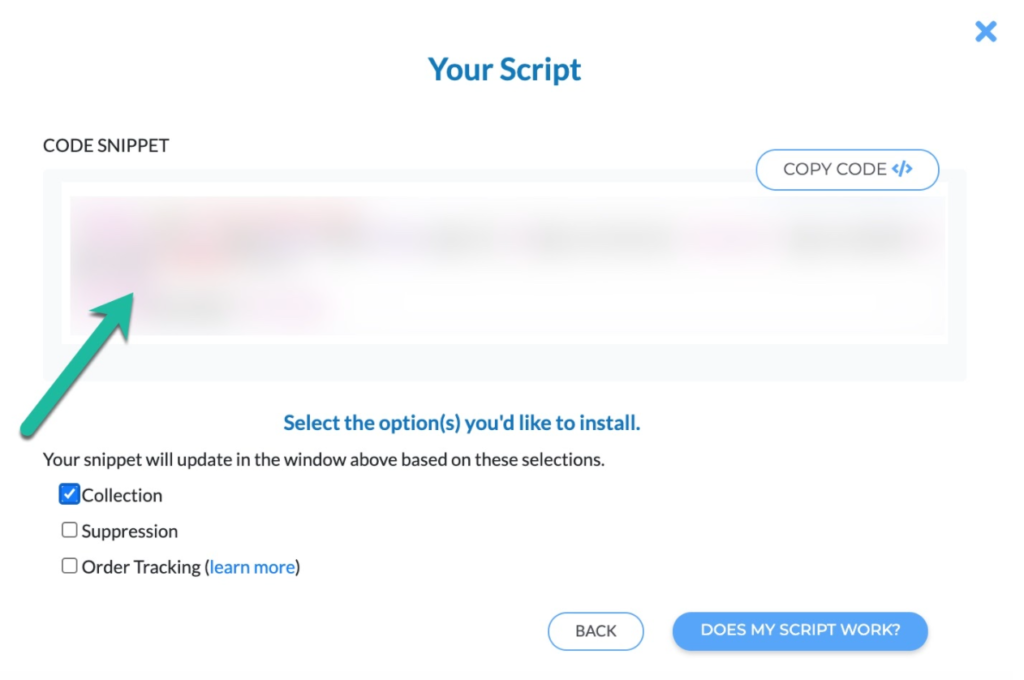
- Putting the script on specific page’s header or footer
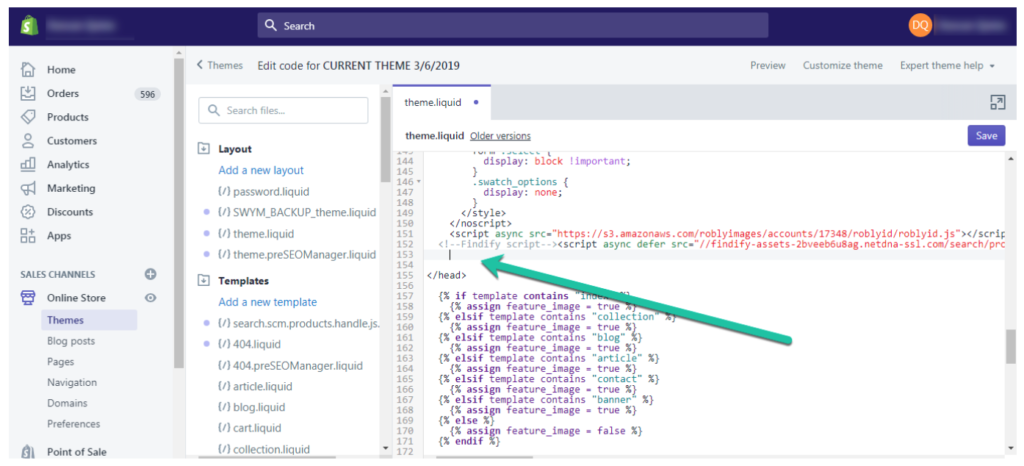
- Or, you could put the snippet code on the entire website
But when should you use it? There are a few different scenarios where email retargeting can have the biggest impact when you:
- Want to tailor promotions to visitors who have already downloaded your lead magnet
- Have a high shopping cart abandonment rate
- Want to engage with people who have visited your site without taking action
There’s really not a bad time or place to use retargeting. The purpose is to follow up with visitors who haven’t fully engaged with you to (hopefully) convert them in the future. Or, you could use it to nudge old customers who drop in that you haven’t seen around in a while.
Retargeting mistakes to avoid
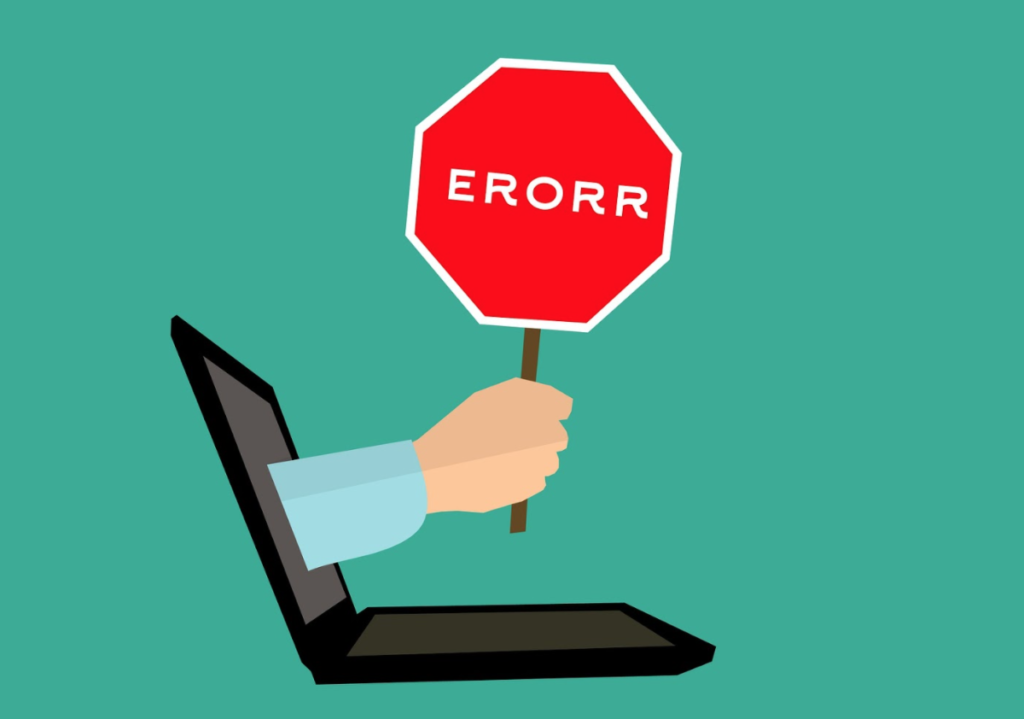
When you try out something that’s completely new, it can be difficult to tell if it’s working or not. It’s only natural to want to see a positive ROI for using email retargeting. To do that, you need to know how to get the most from your retargeting efforts — and what to avoid if you want the best results.
Here are three mistakes people make that hurt their retargeting efforts:
- Didn’t wait long enough for results. Unlike the rest of your email marketing list, the anonymous visitors you collect from email retargeting are coming in cold — meaning they didn’t purchase anything from you or opt in. They are further up in the sales funnel than contacts who have already engaged with you or converted, so they can take more time to convert. Give retargeting 60 days before you evaluate how it (and the emails) performed.
- Didn’t put the collected contacts into a welcome email series immediately. Your goal should be to send an email to these recipients as soon as possible. You can either create a welcome series that was created specifically for retargeted email addresses, or you can put them in an existing welcome series without any trouble. If someone visits your site and then receives your welcome email, that’s not weird or unexpected — as long as you do it soon after they visit. (Find more info on what to include in those emails below.)
- Emailing them like they are already a customer. They didn’t make a purchase or sign up for your newsletter, so don’t treat them like they did. One of the worst things you could do is add them into your normal email newsletter list and hope they think that’s normal: It’s not. Ease them into your campaigns with a welcome series.
By avoiding these mistakes, you’re making the most of your email retargeting strategy — and setting yourself up for the best ROI.
Email retargeting best practices
https://www.youtube.com/watch?v=plYr3NwUdOY&list=PLO-1NFZxoPmb7WYhWte5OK6F4d8I5acGU&index=6&t=0s
Now that we’ve covered some of the no-nos associated with email retargeting, let’s talk about what you should be doing to reach your goals with some of the top best practices.
Timeline
Reach out to them ASAP. If you’re using retargeting to trigger an email campaign, send the email as quickly as possible — like within an hour. That way, they remember they visited your site and will continue with their activity and/or engage with your brand. You don’t want them to be confused about who you are when they see your message pop up in their inbox. (And people have short memories these days, so don’t wait to send it!)
Frequency
We can’t stress this enough: Reach out to the contacts you’ve acquired several times. Sending them one email about your product isn’t enough. You need to put them in a welcome series campaign (like three or more emails) to nurture this new lead. Check out this welcome email example from NetGalley that covers all of the basics:

Here’s an example of a successful email frequency that one of our clients uses:
- Send them an email immediately after they trigger your retargeting parameters.
- Email them again after Day 2 and Day 3.
- Remove any email addresses that haven’t yet engaged (helping your deliverability rate).
- Email them seven more times with content offers, etc.
That’s going to give you the type of ROI you’re after. You have to put in the work if you want to see positive results. Not sold on sending so many emails? Just remember the rule of seven in marketing:
People need to interact with you at least seven times before they act.
Email copy
No matter your industry, products, or services, there’s a great (and simple) message to send to the contacts you’ve collected right off of the bat. And here’s that winning subject line for that email:
- Thanks for stopping by the site!
It tells them right away why they are getting your email and reminds them they did, in fact, visit your website. No one is going to get mad about a subject line like that, and it isn’t creepy in the least. After that, your subject lines should tell exactly what the email copy will be about. Maybe you’re sending them a quiz, recipe, or fun activity.
As for the email body content, stick to email marketing best practices:
- Include one action with a clear CTA
- Make sure to keep a similar tone/voice as previous emails and your website
- Everything should be consistent so they know who they’re hearing from
This email from Krispy Kreme is short, (definitely) sweet, and straight to the point. The CTA is front and center, and the fonts and colors matched what was on their site at the time this campaign was sent.

Landing page strategy
Whatever you offered them in your email content, make sure it’s exactly the same on your landing page. You want the landing page to deliver on whatever you promised them in the email. Again, it’s all about consistency.
This landing page from Impraise matches the design for the guide, as shown by the cutout image, and the text matches what was advertised in email campaigns.
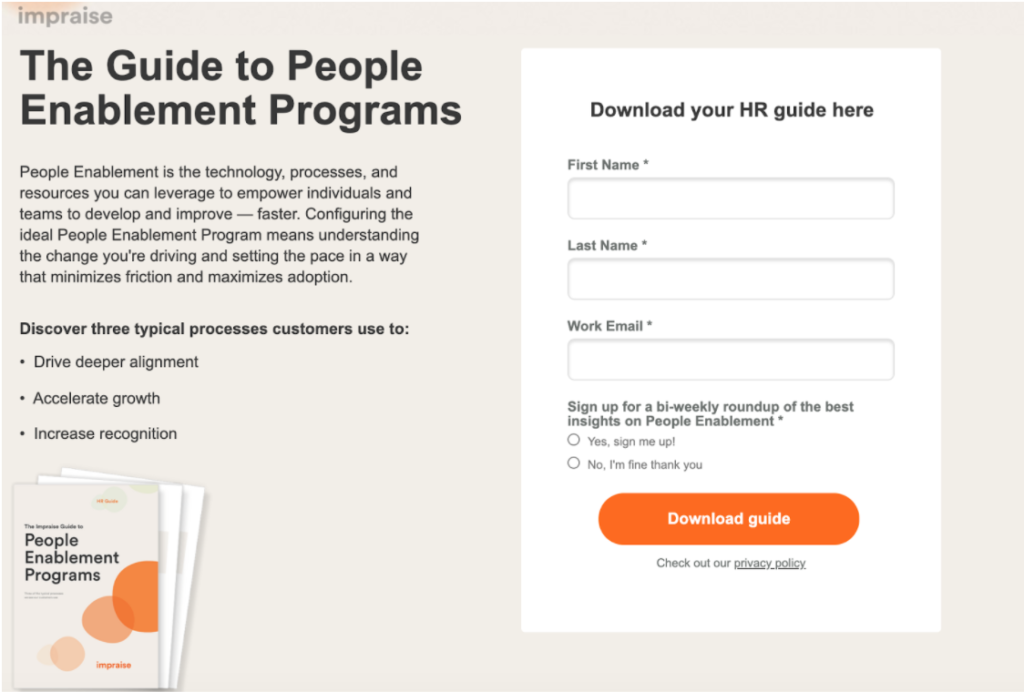
Web traffic
The more traffic you drive, the bigger your email retargeting program can be. However, the higher quality traffic you drive, the better your email retargeting program can be. And we all want great traffic sources, right?
To do that, try to show your email retargeting script to high-quality traffic. That means adding the script to places like:
- Product pages
- Lead magnets
- Blogs
- Pages known for attracting quality leads
Advanced tactics
When you’re ready to take your email retargeting game to the next level, start incorporating these techniques.
Segmenting
Marketers who use segmented campaigns note as much as a 760-percent increase in revenue. So, there’s no denying how beneficial segmentation can be for your marketing efforts. And that’s true when it comes to email retargeting.
- Consider this: If you put the retargeting script everywhere, it will give you the most leads. If that’s your goal, disregard this section. But, those leads are totally unsegmented if you do that, and it’s probably not going to give you the highest ROI. And if that’s what you’re after, you should be selective with where you put your script.
One of the best places to put the script to segment the contacts is on the Cart page. Then, you can send them a Cart Abandonment email (more on that below). Or if you’re a publisher, you could add the script to the highest threshold of engagement.
Another good way to segment (and follow up) is if they visit a product or offer page. You can then send them:
- Ebooks
- Whitepapers
- Recipes
- Activities
- Any valuable material you have
Whatever page is the furthest visitors can go on your site without converting (that’s practical) is a good place to start to segment them. Then, you can expand your reach from there once you start seeing the ROI you’re after.
You should also remember you’ll collect both new and old email addresses during email retargeting. Make sure you don’t treat them the same. You can exclude your current subscribers from the campaigns you send out to the new addresses you collect, focusing on the ones who look like they are about to make a purchase — and offer them a no-brainer incentive so they follow through.
Cart abandonment
Cart abandonment obviously is a major issue. The average cart abandonment rate across all industries is 70 percent, and ecommerce sites lose about $18 billion in sales revenue each year because of it. Wouldn’t you like to see those numbers go way down? You can use email retargeting to do just that.
When you add the script to your Shopify store, for example, you can target visitors who, for whatever reason, didn’t complete their purchase. When that happens, you can send them an email reminding them there’s an item in their cart and then provide them with the link so they can buy it immediately. Make the process as easy as possible to improve the chances of them converting. The fewer hurdles there are to make a purchase, the more likely they are to do it.
Examples
Now that you have a better idea of when and how to use email retargeting, let’s cover some examples of what this practice actually looks like. Here are examples of email retargeting campaigns and which segments to send them to.
Targeted offer
Who doesn’t love a discount or something free? Offering a free gift to someone when they leave your site is a great way to reel them back in, whether they are an anonymous visitor or haven’t engaged with you in a while. Target your offer to what they viewed on your site, like in this example from Wayfair that offers free shipping:
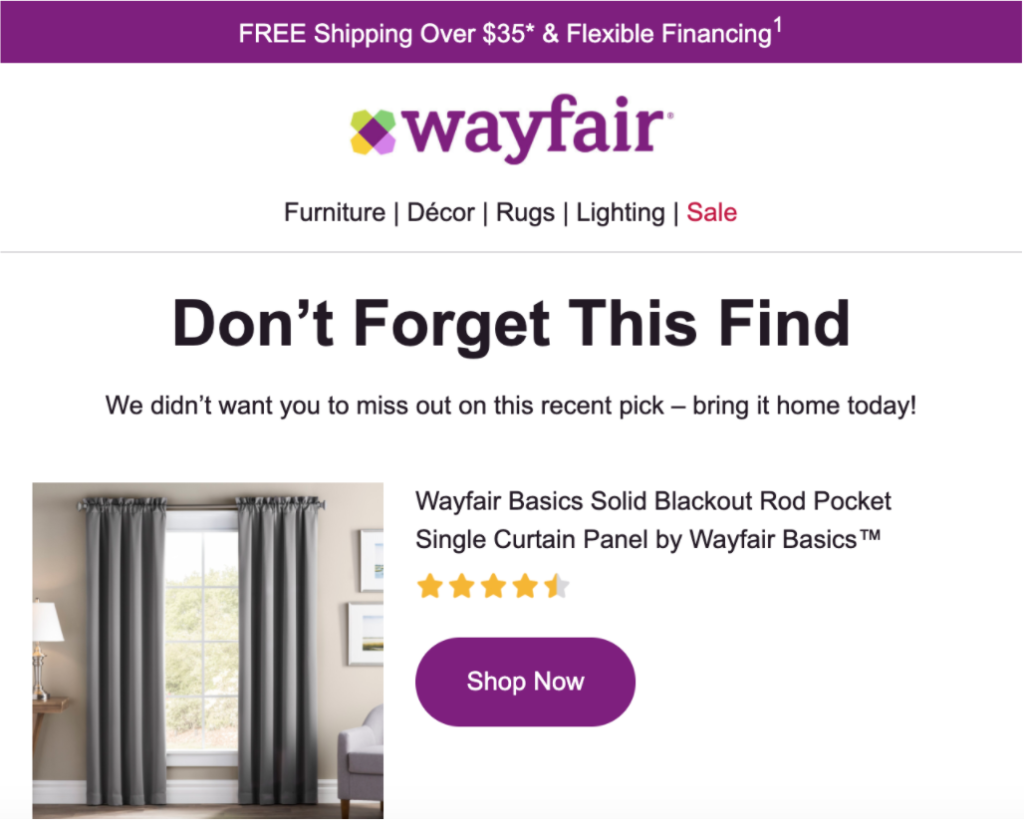
Cart abandonment
We’ve already covered why this one is important, but it can’t be overstated. You don’t want to miss out on a hot lead who abandoned their cart. Send them an email letting them know they forgot something in their cart, or send them a discount if they buy it now (like free shipping).
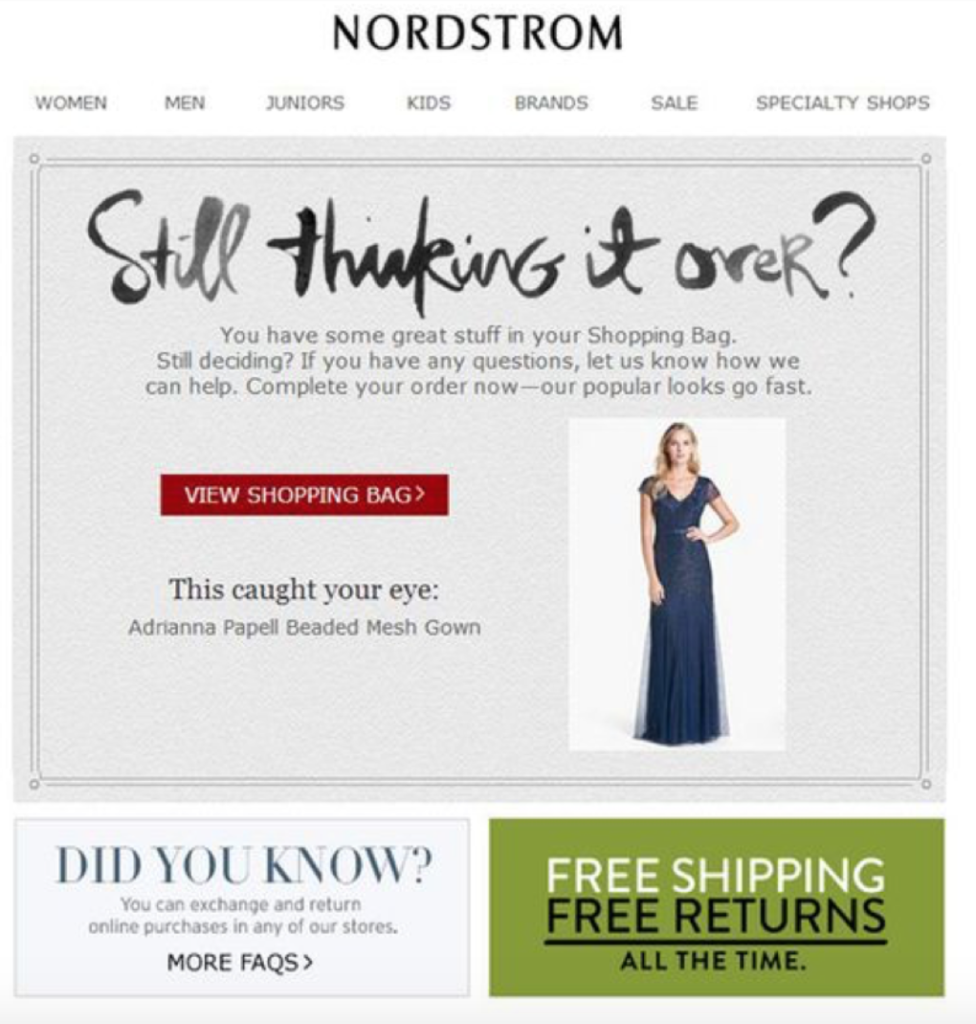
Cross-sell or upsell
If someone has bought from you in the past, they are more likely to buy from you again. You can send a series of product upsell and cross-sell emails soon after a purchase. Here’s an example from Grammarly:
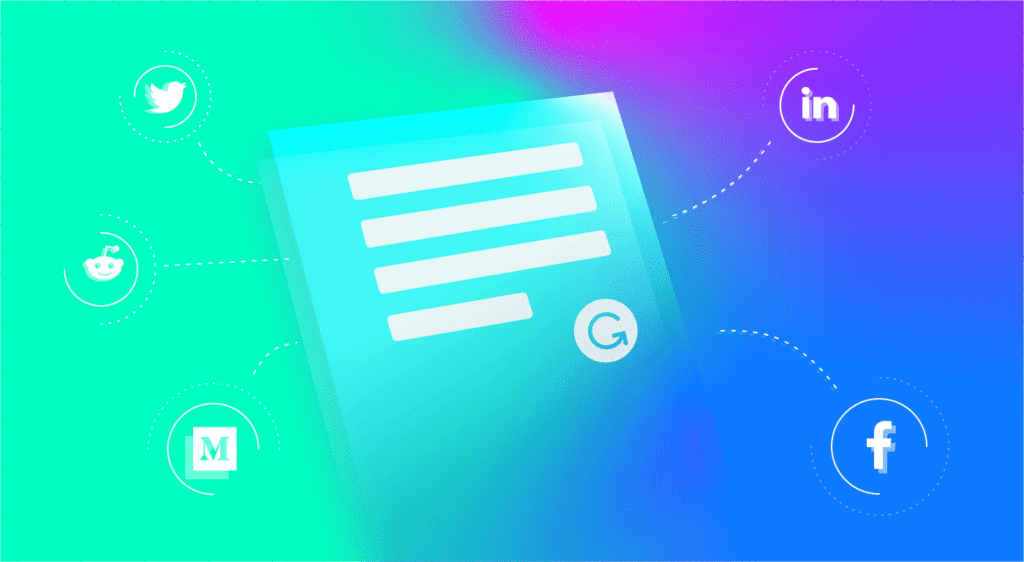
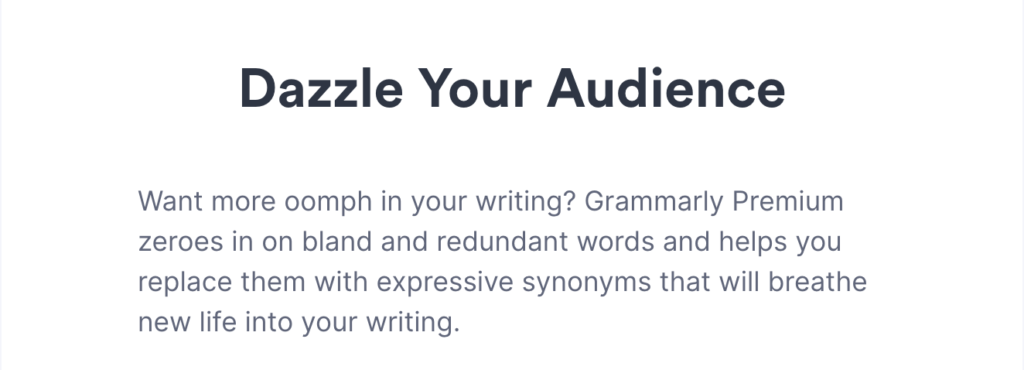

Time to get started!
Now that you’ve finished reading the guide, you have everything you’ll need to know:
- What email retargeting is
- How this marketing practice can benefit you and your business
- When it will bring the best results
- How to add it to your site
- Mistakes to avoid
- Best practices
Still have some questions? Check out our frequently asked questions section below.
FAQs about email retargeting
Email retargeting is pretty new to the scene, so you’re sure to have some questions about how it works. Here are five of the top questions we hear:
- Is email retargeting legal?
Yes, in the United States. This marketing practice is also aligned with Spamhaus’ best practices.
- Once I collect email addresses using retargeting, how should I initially engage with them?
Start with a simple welcome series (three to five emails) to warm them up to your brand. Tell them your brand’s story, offer them a discount, and make them feel comfortable with you. Then, add them to your standard newsletter flow.
- How long does it take to convert these emails into customers?
Since these prospects are higher up in the sales funnel compared to someone who opted in or has already made a purchase, it will take more time to warm them up to your brand and convert them. While the exact time varies per company, we encourage people to evaluate email retargeting over a 45- to 60-day period.
- Can I integrate an email retargeting platform with my current email service provider (ESP)?
It depends on which ESP you use, but many of them will integrate with the email retargeting platform you choose.
- How does email retargeting compare to email remarketing?
Basically, retargeting is identifying users on your site that have taken an action and then targeting them with digital ads or emails. Remarketing is reaching out and re-engaging with current and past customers. Check out this video that further breaks down the two email options:
https://www.youtube.com/watch?v=FStza7C9Txw&list=PLO-1NFZxoPmb7WYhWte5OK6F4d8I5acGU&index=3&t=0s
Now that you have a better understanding of what email retargeting is and how it can benefit your business — from ecommerce to publishers — all that’s left to do is pick an email retargeting platform and get started!














